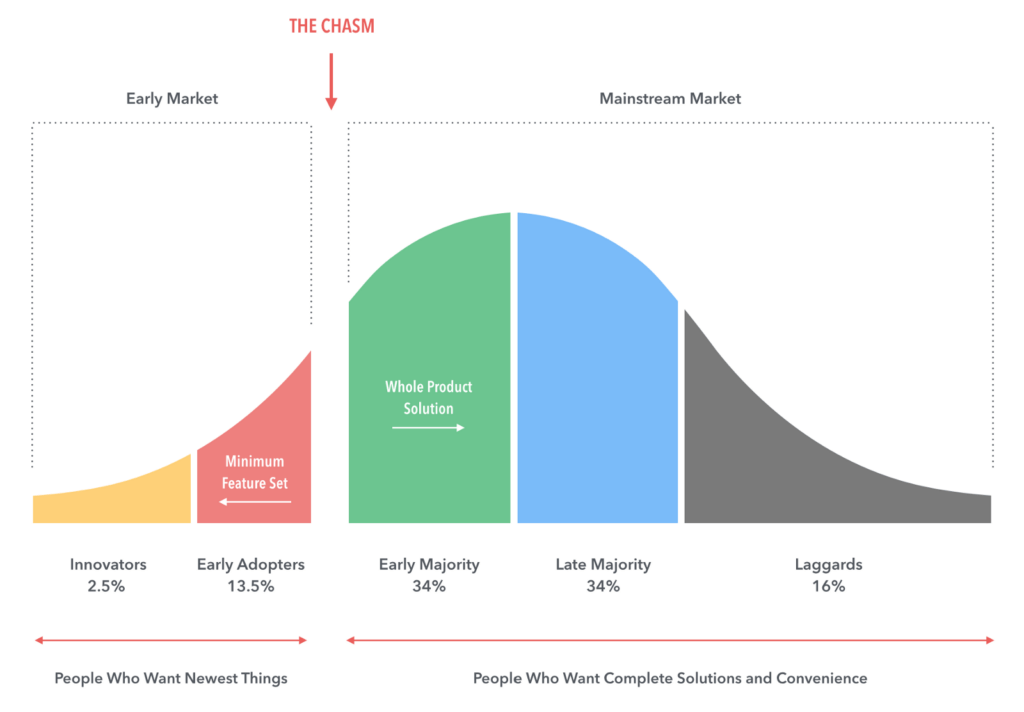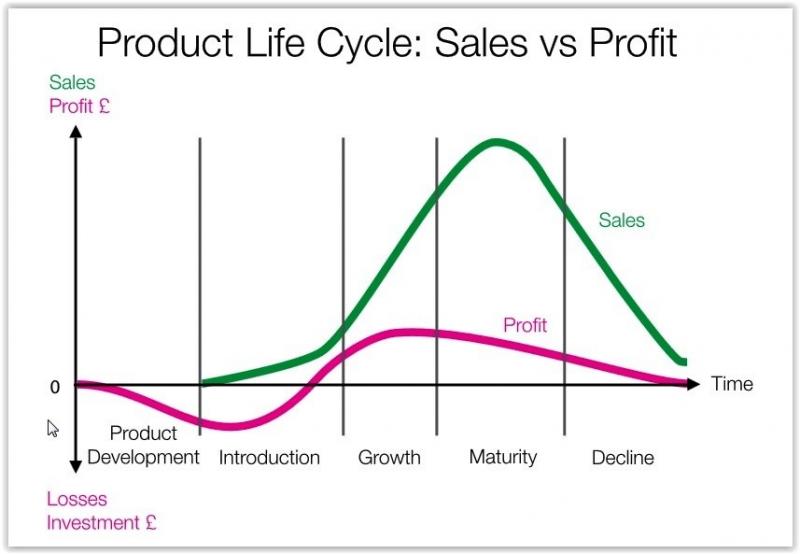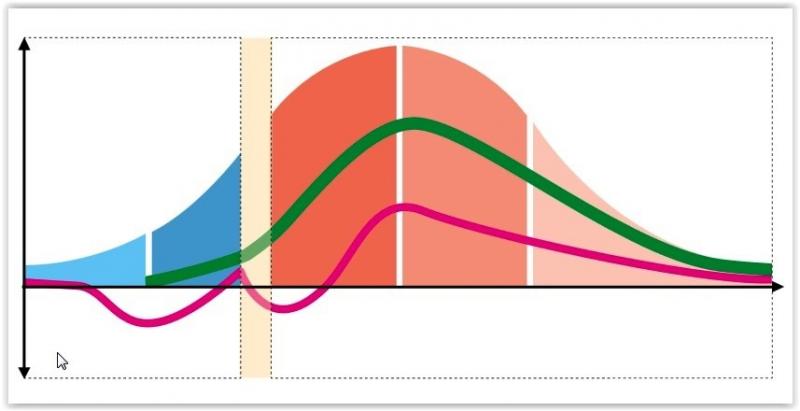There is an issue with any new product launch. It’s commonly described in Figure 1: Innovation Adoption Life Cycle
Figure 1: Innovation Adoption Life Cycle
The first people to buy your new product or service will be innovators and early adopters (I+EA) – people who like new things. But then you have to start selling to the rest of the market -The Early Majority because you have sold to all the innovators and early adopters that you can find. And that’s when you hit a problem. It’s described by the chasm. A place where suddenly sales dry up. And losses mount.
Product marketing strategies
Your sales can dry up because your marketing to I+EA does not work with The Early Majority. And you don’t know exactly where that change occurs. So, you still use the same marketing strategy for the I+EA group but you are running out of them. You need to use a different marketing strategy for the rest of the market.
Innovators and early adopters like new things but the rest of the market – the Early and Late Majority – wants proof. Proof your solution will work for them, which typically comes in the form of other people having bought it and used it already, liking it and reviewing it. Then you’re into a market which is full of competitors. And your marketing needs to address this.
It’s difficult to know when this change occurs so you tend to use the wrong strategy for too long. Because your idea is new, there’s no data to tell you when you’re running out of I+EA customers. You may feel that it is getting more difficult – speed of sales starts to fall off, the time to convert a lead starts to increase, but it won’t be enough to tell you definitively you are at The Chasm. However, it is enough to tell you to start marketing for the Early Majority as well as continuing your marketing for the remaining I+EA.
Now, for ‘product’ read ‘business’
What is less well understood among small business owners is this concept works for a new business as well as for a new product or service. With any new business, its first customers are taking a chance as they have no track record to rely on, no-one they can ask – and there are no reviews for something which hasn’t existed before. But they will take a chance and often offer the new business far better terms especially in paying its invoices, than any existing business can get. Your first customers (I+EA) are invested in your success and will change the normal rules to help that happen. Recognising this, the business will treat those first customers incredibly well as they are providing some feedback that the business has got an idea with some merit that somebody will pay for.
As the new business starts to run out of I+EA customers it needs to switch its marketing in the same way as if it were selling a new product. It needs to market to the Early Majority. The business needs to provide proof which it has from the testimonials and case studies based on the I+EA customers. Service levels to the I+EA group still need to be high though, and it’s very easy for service levels to drop as the business changes its target markets. This needs careful management otherwise I+EA customers will not provide the proof needed for the Early Majority.
Planning for The Chasm
Figure 2: The Product Life Cycle chart shows the sales and profits (and for profits read cash flow) of a new product or service.
Figure 2. Product Life Cycle: Sales vs Profits
Usually a loss is expected in the early period from investment in product development, acquisition of assets and structure to enable sales to take place, which naturally starts later. This is the dip in profit shown underneath the horizontal axis at the beginning. Again, the analogy is accurate for a new business as well as a new product or service. The new business needs to invest time and resources, which create a loss before it can sell anything. The business generally accounts for this in its business plan, but what it doesn’t often do is plan for The Chasm.
Realisation of the risks
The general rationale of most businesses is that customers are all much the same so that more marketing effort will simply result in more customers in a linear way. Wrong! Business plans may have built-in some sensitivity and SWOT analyses but they tend not to produce anything which recognises the necessary change in marketing method to address the change in market when the new business or the new product changes from I+EA to Early Majority.
The first realisation is that all customers are not the same. Failing to recognise the differences between I+EA customers and the rest of the market will slow sales and impact cashflow negatively, possibly fatally.
The second realisation is that overlap marketing may well be necessary to bridge The Chasm quickly.
Double dip losses
If the new business has insufficient cash resources, either through trading or through funding to invest in the necessary overlap marketing to soak up the remaining I+EA with the initial marketing strategy, whilst simultaneously spending on the new marketing strategy for the Early Majority, there is the real risk of a double dip of losses just at the time when that Chasm appears. So, it is quite possible that the double dip together with a lack of sales can cause the business to fail. This is illustrated in Figure3: The Double Dip
Figure 3 : The Double Dip
Avoid The Chasm for survival
To avoid this double dip the new business needs to retain enough resources to fund the double marketing effort so that the chasm is reduced or eliminated. You need to review your planning and check you have enough marketing budget. Bridging the chasm quickly by reducing its timespan and impact is critical to business survival and enables you to scale the business faster.



